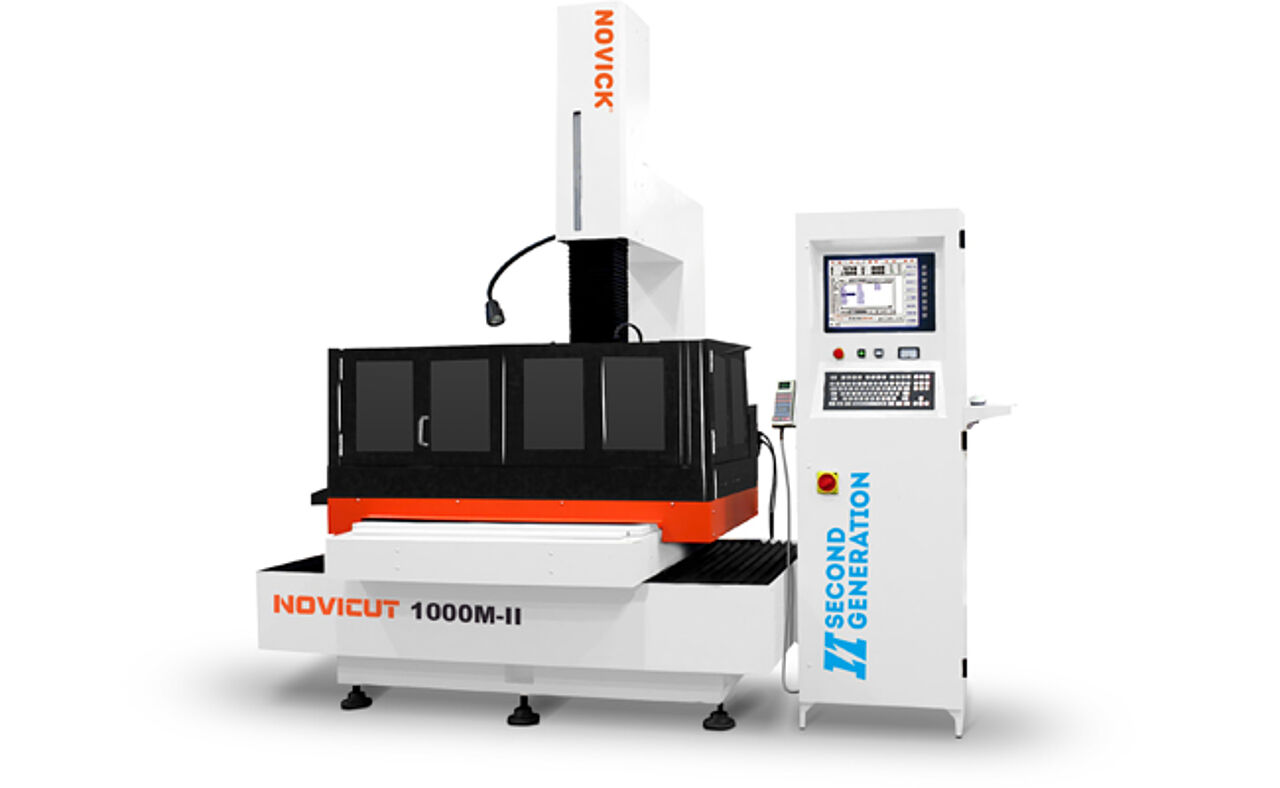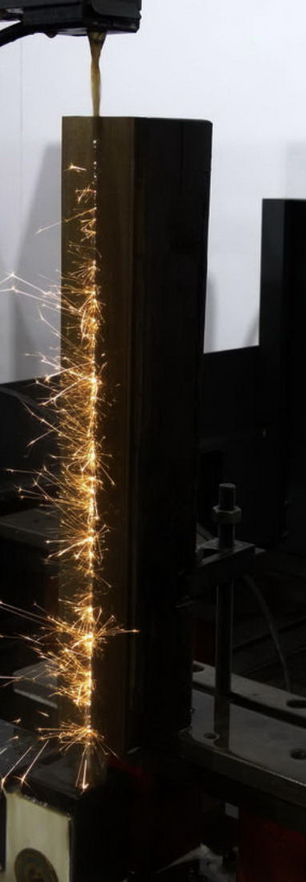Electrical Discharge Saw Slices Through Hard Alloys
Electrical discharge sawing uses molybdenum spark-erosion technology to create blanks from exotic alloys much faster and much cheaper than any other sawing machine.
EDS: Electro discharge sawing with Molybdenum wire
Cheapest way of sawing hard conductive materials
The electronic discharge sawing (EDS) is a new metal cutting process, applying spark erosion – the basic operating principle of wire EDM – with a reciprocating molybdenum wire to promise less material waste, less environmental impact, greater productivity (max 300 mm²/min) and low operating costs. This new technology could change the future of cutting hard, exotic and composite metals.
EDS can cut any conductive metal, esp for hard, exotic and composite metals
Benefits you will get with EDS machines:
- Saving production time (Max cutting speed: 300mm2/min)
- Saving tool cost (the molybdenum electrode wire is cheaper than any quality sawblade)
- Saving precious steels : the cutting gap is much smaller: 0,2 mm instead of 1,2-2 mm)
- Saving material cost : We can cut out parts from bigger plates without need to cut each part in two as with a sawing machine
- We cut without using force
- We can pile up plates
Sawing with molybdenum wire
The most economical solution to cut hard and though conductive materials!
Sawing and wire EDM are two processes shops commonly use to cut workpiece blanks from material stock. In some cases, very high material hardness makes it impossible the use a band saw for blank cutoff. Although standard brass/copper wire EDM is an alternative for such materials, it can be a time-consuming and very expensive operation that creates a production bottleneck.
Novick has developed with their noviform-M series a cutoff process which can quickly create blanks from titanium, nickel, metal composites and other conductive materials regardless of their hardness. The Electrical Discharge Sawing machine (EDS) uses spark-erosion technology with molybdenum wire that can cut through not only exotic alloys much faster than a standard wire EDM, but also much cheaper than even a sawing machine.
The cutting width is only 0,2 mm and the heat affected zone that is generated is less than 0,15 mm.
An EDS machine functions similarly to a wire EDM unit. However, instead of using brass/copper wire as the electrode, the EDS machine uses a thin, electrically charged molybdenum wire that continually reciprocating moves up and down.
Cutoff begins as the molybdenim wire "touches" the workpiece and dielectric is sprayed across the wire and workpiece. The resulting spark-erosion “sawing” process cuts at an average speed of 200 mm² ( max 300) per minute. The key for this speed lies in the machine’s proprietary electronics. In comparative test cuts of a dense, metal composite measuring 160mm height, a sawing machine cutting time was approximately 4 hours, while EDS cut the material in only 46.5 minutes.
Cuts can be performed on stock with round, straight or angled surfaces. Because the wire under tension does not wander during the operation, it creates very straight cuts. This minimizes material waste, thus reducing costs. The spark-erosion operation creates neglectable very little sawing force, so a simple pneumatic clamping system is used to secure material for cutting.
The overall operating cost of an EDS machine is low. Unlike the huge quantity of brass/copper wire consumed in a standard EDM wire cutter, a single reusable molybdenum wire is used for multiple cuts. For instance, a single wire can perform 1 full day continious cuts before replacement. Wire replacement is said to take less than 10 minutes. You can not cut very hard and though metals cheaper than with our machine.
These machines are simply money savers!


